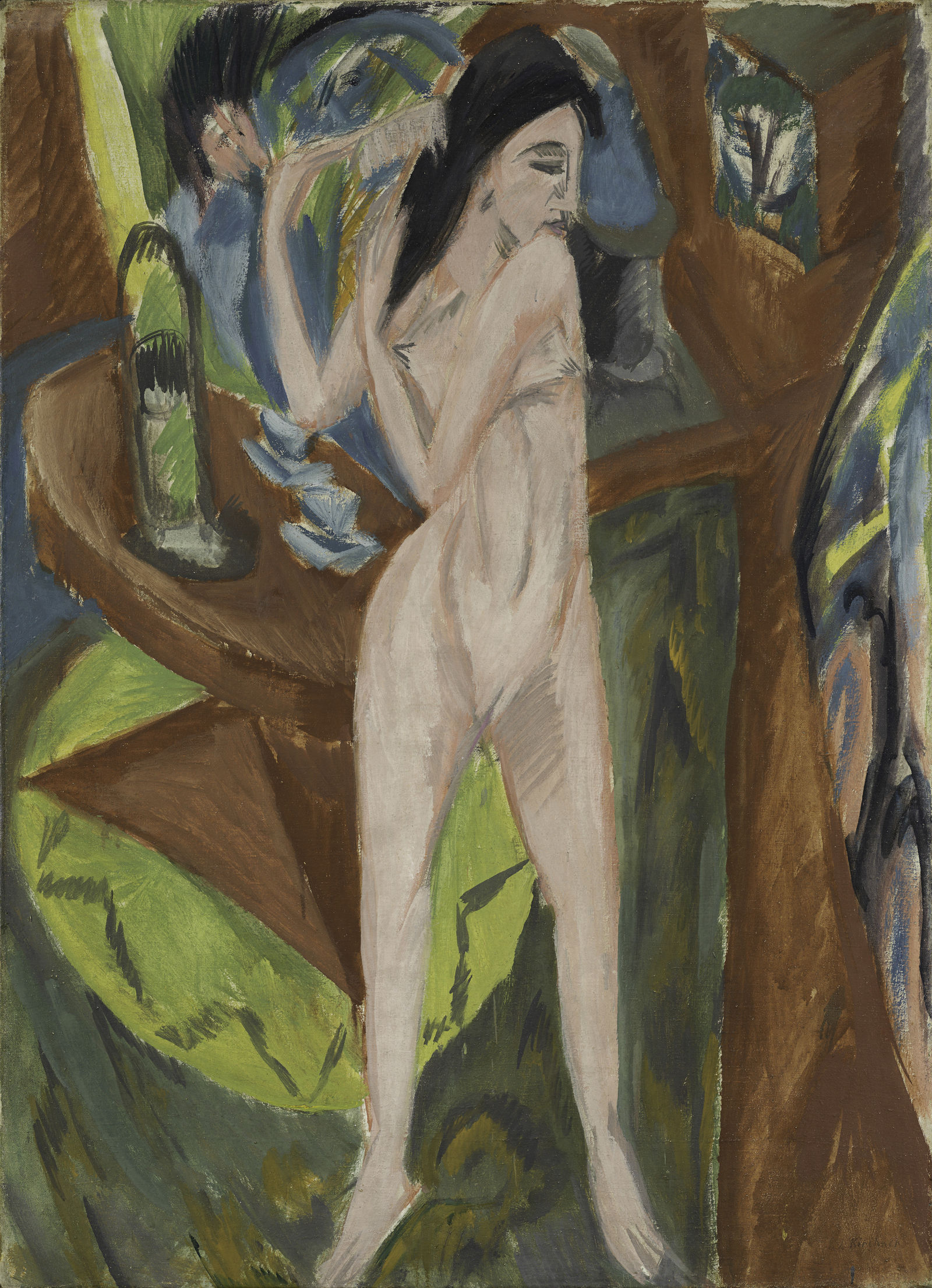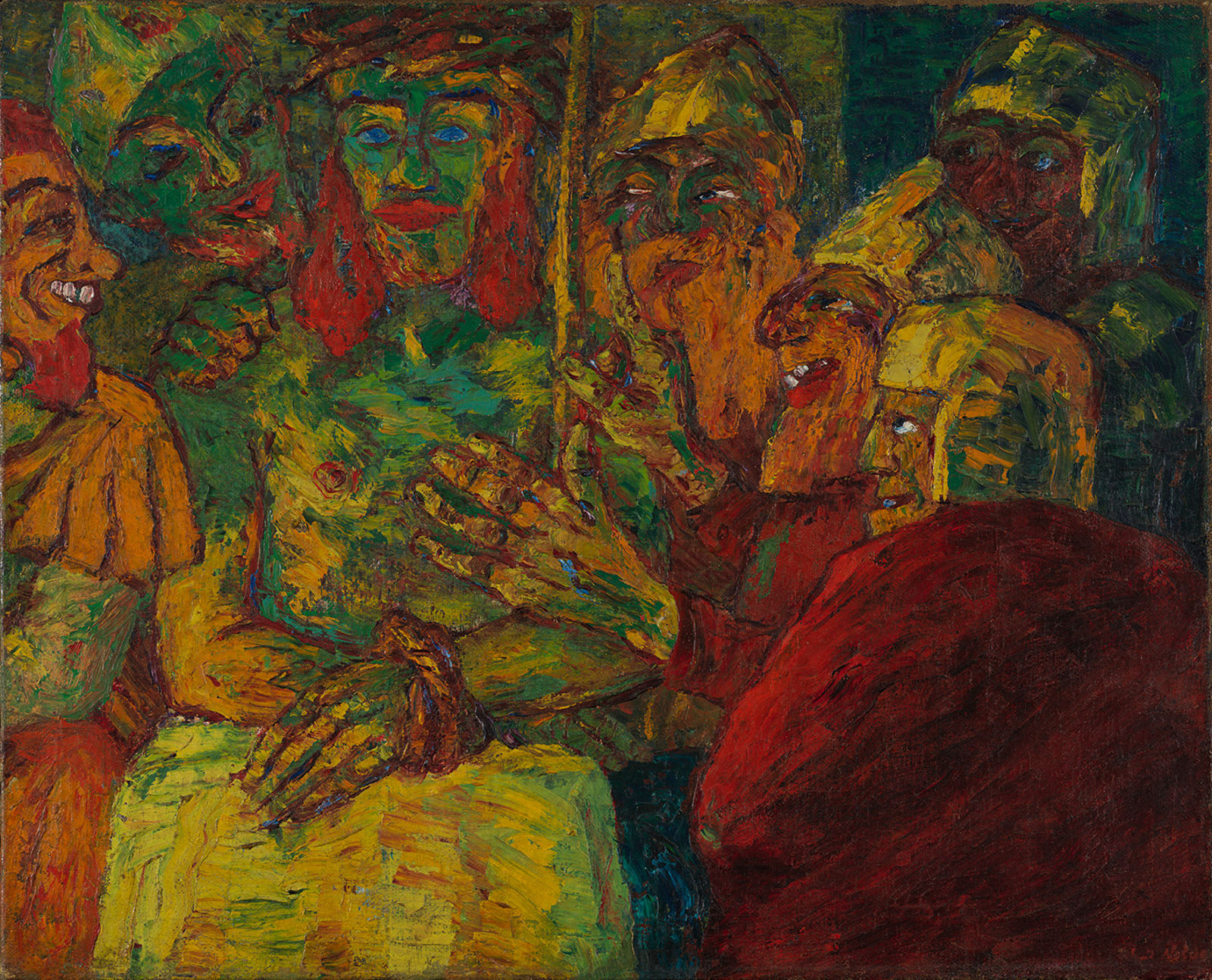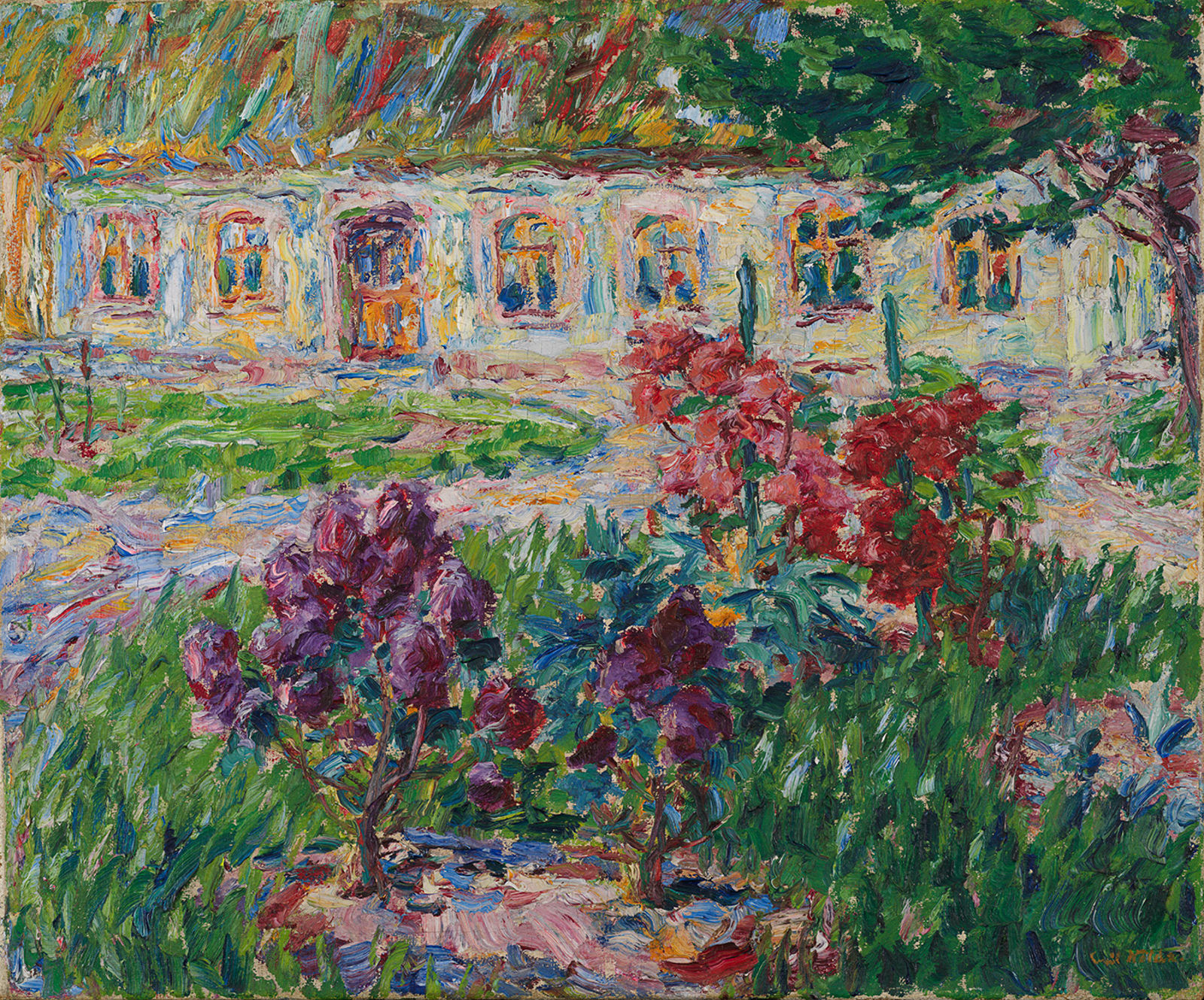Nazi Propaganda “Degenerate Art”
by Isabel Fischer
9 images
During the summer of 1937, thousands of Modernist artworks were seized and removed from German museums during the course of the Nazis’ “Degenerate Art” campaign. Shortly afterwards, some of these went on display in the propaganda exhibition of the same name in Munich together with critical commentary about them. In 1938, the defamatory exhibition toured Germany in varying configurations. At the same time, some works were sold to foreign art collectors in order to turn the confiscations into profit as well as propaganda. Nine of those works seized now form part of Brücke-Museum’s collection.
With the provocative term “degenerate”, the Nazis were locking into a term that was already being used at the end of the 19th century as a description for deviations from the supposedly ‘normal’. Medical doctor and writer Max Nordau had used it as a book title for a controversial appraisal of trends in contemporary art. The term originally comes from biology and medicine, but Nordau uses it to denigrate modern art movements as pathological phenomena, degeneration, and signs of social decay.
The Nazis took the same tack and embedded the term in their ideology. They labelled the entire spectrum of modern art from Expressionism to Dadaism to New Objectivity as “degenerate”. The deformation and simplified representation of the human body, in particular, was perceived as an attack on their own racist ideology. In contrast, they presented the concept of an “healthy” art that was “unique to the human species” that promoted an idealized image of human beings and their bodies.
The attacks on Modernist art and the widespread confiscations meant that by the end of the Second World War such works had disappeared almost entirely from public institutions. Hard to imagine that even in the early 1930s there was still the idea that Expressionism could emerge as the official state art movement, a hope initially shared by the former Brücke artists too.










